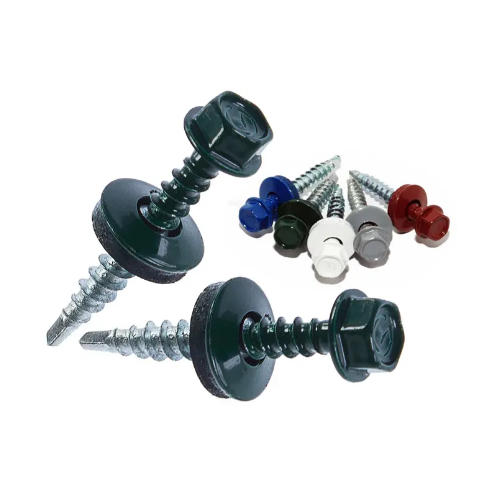flat washer specs exporter
Understanding Flat Washer Specs for Export
Flat washers are essential components in various engineering and construction applications. They serve multiple purposes, including distributing load, reducing friction, and preventing damage to surfaces. For exporters dealing with flat washers, it’s critical to understand their specifications to meet international standards and customer expectations. In this article, we will delve into the key specifications of flat washers, their types, materials, and why these aspects matter for successful exportation.
What is a Flat Washer?
A flat washer is a type of washer characterized by its flat, disc-like shape. Typically made from materials such as metal, plastic, or rubber, flat washers are designed to be placed under the head of a bolt or nut. They provide a larger bearing surface, help to immobilize fasteners, and prevent loosening due to vibration.
Key Specifications
1. Diameter The diameter of a flat washer is crucial as it determines compatibility with various fasteners. Washers are available in several sizes, typically categorized by inner diameter (ID) and outer diameter (OD). It’s imperative to specify these measurements in accordance with international standards (such as those set by ANSI, ISO, or ASTM) when exporting.
2. Thickness Thickness affects the load-bearing capacity of a washer. Thicker washers can distribute load more effectively and are often preferred in high-stress applications. Exporters must have precise thickness measurements to ensure that their products meet the requirements of their clients.
3. Material The material of the flat washer greatly influences its performance and durability. Common materials include
- Steel Often used for general applications, steel washers can be galvanized or zinc-coated for corrosion resistance. However, they are not suitable for environments that require high corrosion resistance. - Stainless Steel Known for its excellent strength and corrosion resistance, stainless steel washers are ideal for outdoor or marine applications. - Plastic Plastic washers are lightweight and resistant to corrosion, making them suitable for electrical and insulation applications.
4. Finish The finish of a washer can affect both performance and aesthetic appearance. Common finishes include plain, black oxide, and various electroplated options. When exporting, the finish should correspond to customer specifications and any relevant regulatory requirements.
flat washer specs exporter

5. Load Capacity The load capacity of a flat washer is determined by its material, thickness, and overall size. For engineering applications, understanding and indicating load capacity is vital to ensure safety standards are maintained.
Importance of Certification and Standards
When exporting flat washers, adherence to recognized standards is essential. Certifications such as ISO 9001 (Quality Management Systems) and ISO 14001 (Environmental Management Systems) not only enhance product credibility but also reassure customers of quality and compliance. It is crucial to provide documentation that verifies the specifications and quality assurance processes of the washers.
Market Trends and Demand
The demand for flat washers is influenced by trends in various sectors such as construction, automotive, and manufacturing. With the growth of technology and automation, there is an increasing demand for high-quality, durable fasteners. Exporters should stay informed about market trends, customer needs, and emerging technologies to maintain competitiveness.
Challenges in Exporting Flat Washers
Exporting flat washers is not without its challenges. Variability in international standards, customs regulations, and packaging requirements can complicate the export process. Understanding the specific regulations of the destination country is crucial to avoid delays and additional costs. Collaborating with logistics experts can streamline the export process, ensuring compliance and timely delivery.
Conclusion
Flat washers might seem like simple components, but their specifications play a critical role in their performance and application. For exporters, understanding these specifications—diameter, thickness, material, finish, and load capacity—is vital for meeting customer expectations and complying with international standards. Additionally, staying aware of market trends and challenges can secure a competitive edge in the global market. As a vital component in a multitude of applications, flat washers will continue to be in demand, presenting opportunities for exporters who are well-informed and prepared.
-
Top Choices for Plasterboard FixingNewsDec.26,2024
-
The Versatility of Specialty WashersNewsDec.26,2024
-
Secure Your ProjectsNewsDec.26,2024
-
Essential Screws for Chipboard Flooring ProjectsNewsDec.26,2024
-
Choosing the Right Drywall ScrewsNewsDec.26,2024
-
Black Phosphate Screws for Superior PerformanceNewsDec.26,2024
-
The Versatile Choice of Nylon Flat Washers for Your NeedsNewsDec.18,2024










